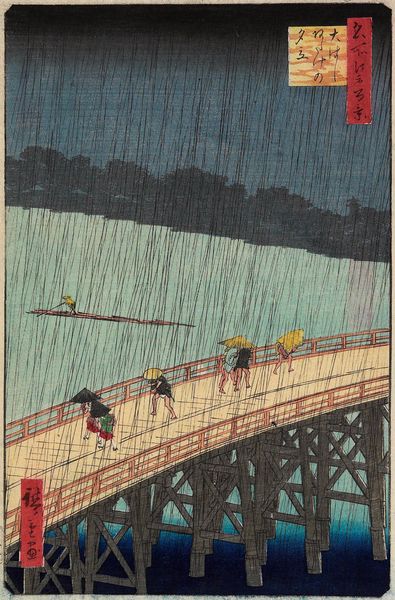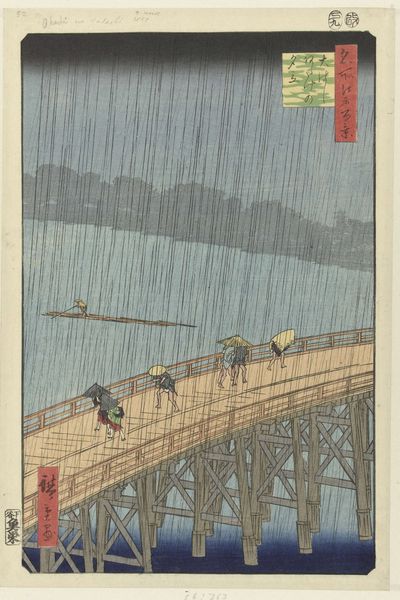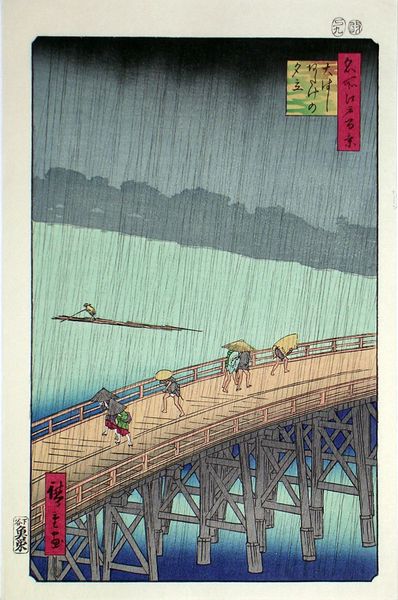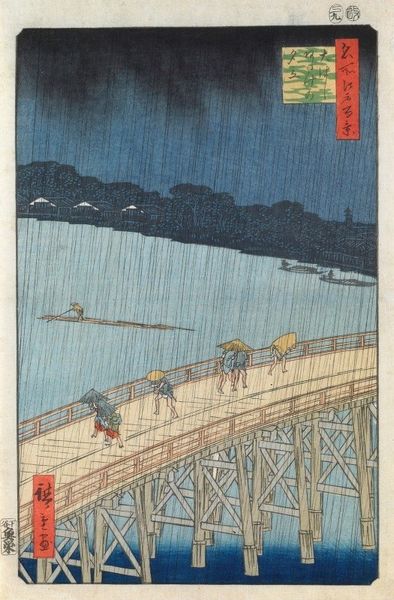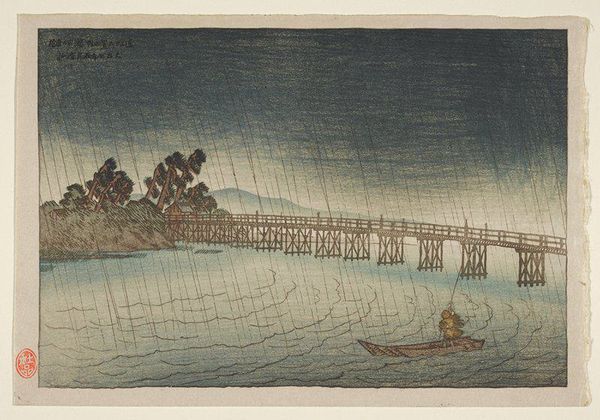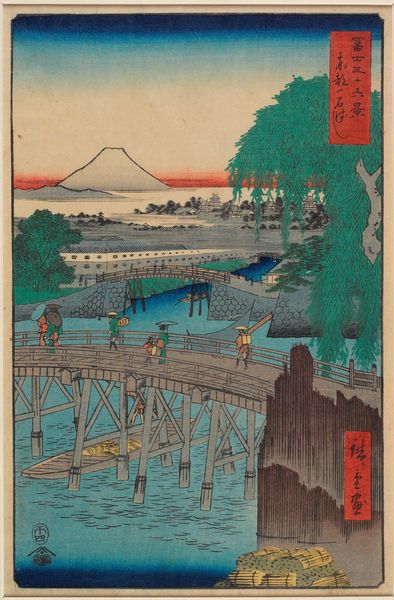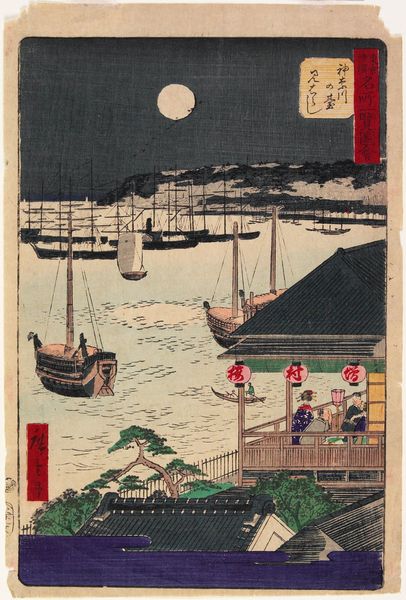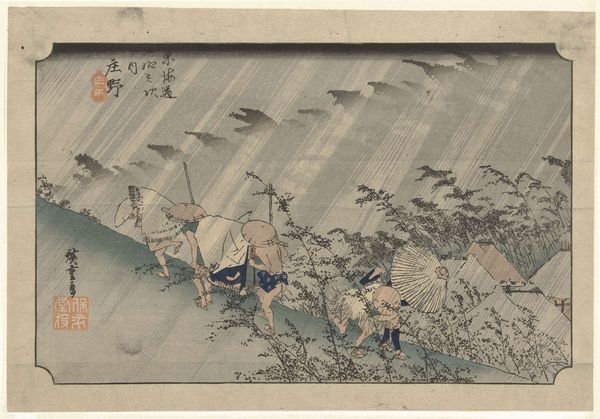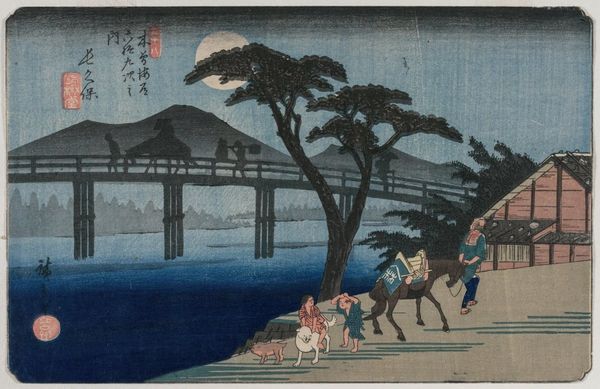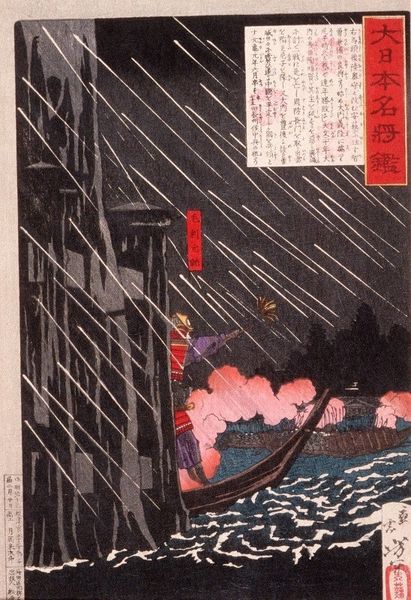
Onverwachte regenbui op de grote brug te Atake Possibly 1891 - 1899
0:00
0:00
utagawahiroshigei
Rijksmuseum
Dimensions: height 371 mm, width 254 mm
Copyright: Rijks Museum: Open Domain
Curator: Let's delve into this remarkable print, "Sudden Shower over Shin-Ōhashi bridge and Atake," potentially dating between 1891 and 1899, by Utagawa Hiroshige I. The Rijksmuseum holds this work. Editor: The immediate feel is one of dramatic weather closing in. The diagonals of the rain contrast beautifully with the strong horizontal of the bridge itself, giving the image both movement and structure. Curator: Indeed. It's fascinating how Hiroshige captures this fleeting moment. We see figures caught in an unexpected downpour. Prints like this had a profound impact, circulating widely and even influencing European movements, think Japonisme and its effects on Impressionism. Editor: And consider the labor involved in these woodblock prints. From the artist’s design to the carver's meticulous work on the blocks, then the printer's careful layering of colours - each step required specific knowledge. It's a true collaboration in production. Look at the rendering of the rain: incredible skill and exactitude with each line. Curator: Absolutely. Also notice how ukiyo-e prints played a vital role in popular culture at the time. This image captured urban life in Edo, offering affordable art that could be consumed by a wide audience, shaping perceptions and desires. Editor: The very choice of the bridge is relevant; a crucial piece of infrastructure enabling movement. The artist captures human figures traversing the span, labouring perhaps. One senses their struggle to navigate through the elements, which connects deeply to lived, material realities. The city and weather are not backdrops. Curator: I see it as a reflection of Edo society's relationship to nature and how city dwellers coped with everyday challenges like sudden weather changes, reflecting broader social adaptation. Editor: It is beautiful how something considered a "low" art could communicate such a nuanced narrative of labour. And while some view this print through its relationship to art movements, such an interpretation could lose how Hiroshige used materials in a practical manner. Curator: Agreed. It is through considering all those elements together, process, cultural context, and materiality, that we can truly appreciate Hiroshige's artistic achievements, reflecting also on its lasting appeal. Editor: Precisely. What was meant for the hands, hearts, and minds of everyday people continues to move us in a visceral manner.
Comments
No comments
Be the first to comment and join the conversation on the ultimate creative platform.
